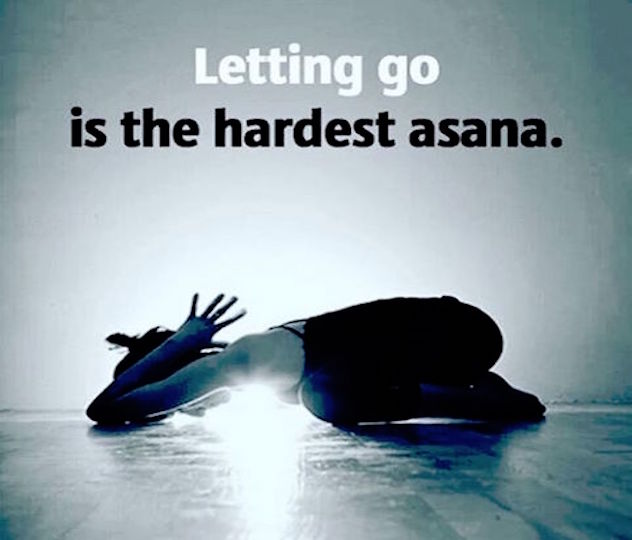Attachment

Have you ever walked into the yoga studio ready for practice only to find that your favorite spot was already taken? Or to find your favorite teacher was sick and a sub was teaching that day?
Your first response might have been just a sigh, or an internal “Ugh!” or perhaps even a quick glance at the door and a fleeting thought of just leaving it for another day…
You might not have realized it at the time but these were actually great opportunities to practice your yoga off the mat (or at least outside of your asana practice). Our minds start to chatter when we are faced with what we perceive to be an uncomfortable situation and often this attitude can affect our practice, or our mood, or our entire day. So what exactly happens? In yogic philosophy we learn that there are five kleshas – the ego (asmita), ignorance (avidya), aversion (dvesha), fear (abhinivesha) and attachment (raga) – that are the root cause of suffering (dukkha). When we are faced with the forced release of something we are attached to we move into state of suffering because our minds label this situation as bad, or perhaps even intolerable. Suddenly we are distracted from our practice and our purpose, no longer able to focus on the present moment and the experience at hand with any objectivity. In the yoga sutras, we learn that the only suffering that can be avoided is that which hasn’t happened yet. So how do we avoid suffering? Letting go – little by little – of our ego, our fear, our aversions, and our attachments. Easier said than done, right? But this is just one of the myriad ways that each yoga practice is a microcosm of life itself. The yoga studio is a safe place, and your mat is your sanctuary, so why not try letting go a little while you’re in this space…
Experiment with a pose that causes you to feel fear and ask yourself of what exactly are you afraid?
Roll out your mat on a part of the floor you’ve never been to before and release your attachment to a particular location.
Notice when your ego creeps into the practice and challenge yourself to let it go and see what’s left to accomplish on your mat when you’re not performing or competing.
Do that pose that you always avoid.
In each of these situations watch your mind, your thoughts, and your emotional responses. This is the foundation of mindfulness. When we practice with mindfulness we begin to see the opportunities presented to us to learn about ourself and how we respond to situations our minds perceive as uncomfortable. Seeing clearly what lies before us, whether it be fear, attachment, aversion or our ego, is the first step towards lifting the veil of ignorance so that we may see the world and ourselves exactly as we are.
Namaste,
Kat Wheatley
